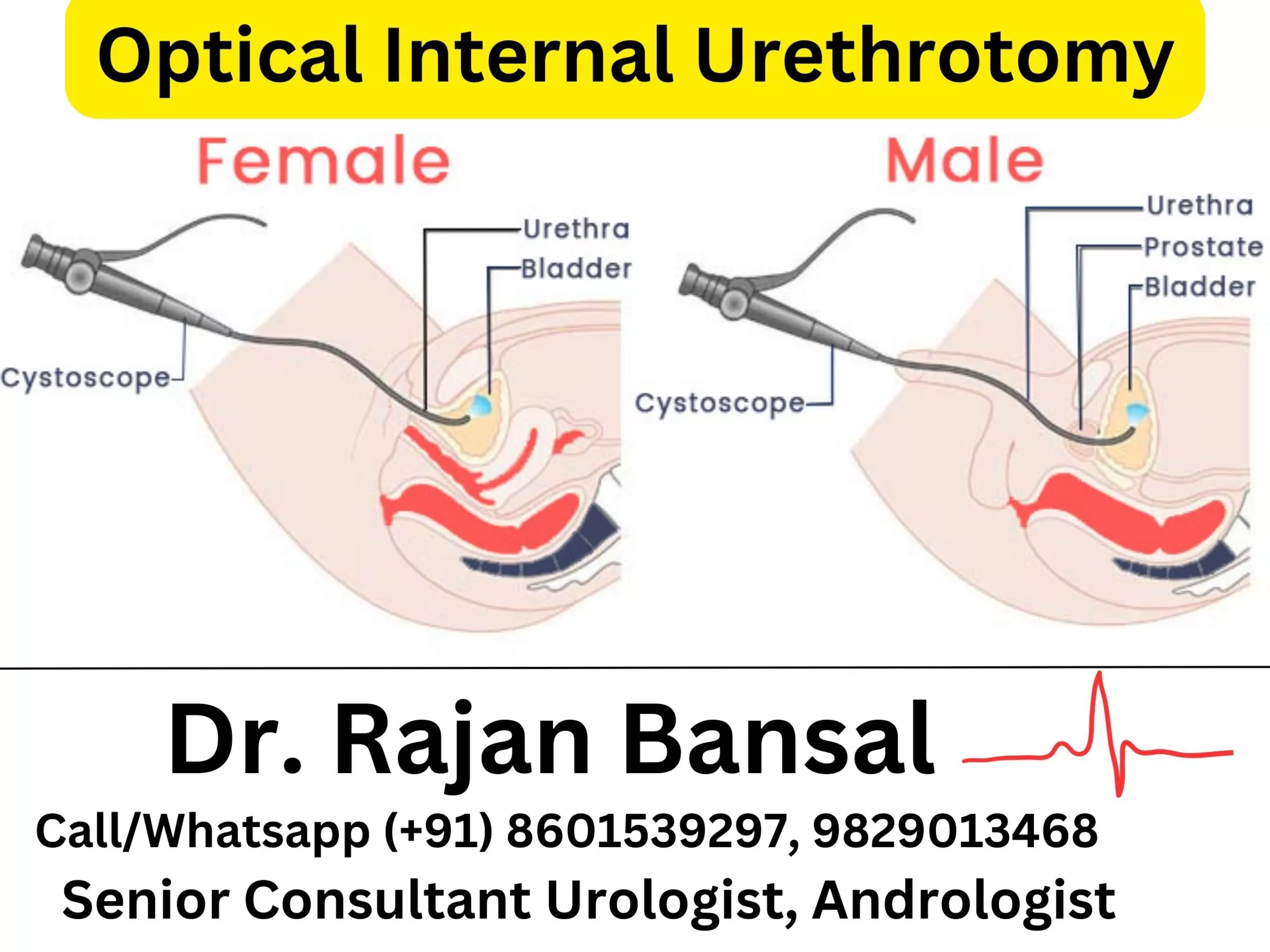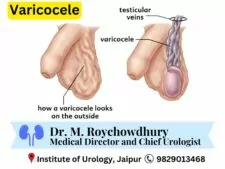As per the International Continence Society guidelines, an underactive bladder (UAB) refers to a reduction in the strength or duration of muscle contractions in the bladder (detrusor), causing incomplete or prolonged bladder emptying, which usually occurs within the expected timeframe. In very simple words, an underactive bladder means that the muscles in the bladder aren’t squeezing as they should when you pass urine. This can make it tough to completely empty your bladder, leading to problems like a weak urine stream, trouble starting to pee, or feeling like you haven’t emptied your bladder fully even after trying.

What are Symptoms of Underactive Bladder?
Underactive bladder (UAB) can lead to various symptoms related to difficulties in bladder emptying due to weak or ineffective contractions of the bladder muscles (detrusor). These symptoms may include:
- Incomplete Emptying: The feeling of not being able to completely empty the bladder, even when you try to urinate.
- Weak Urine Stream: Urination might produce a weak or slow stream, making it challenging to urinate with normal force.
- Straining during Urination: Difficulty initiating urination, which may require extra effort or straining to start or maintain the flow of urine.
- Frequent Urination: The need to urinate more often than usual due to incomplete emptying and the bladder not emptying fully.
- Urinary Retention: In severe cases, the bladder might not empty at all, leading to urinary retention and the need for catheterization to empty the bladder.
- Urinary Tract Infections (UTIs): Incomplete bladder emptying can increase the risk of UTIs due to the stagnant urine left in the bladder, which can become a breeding ground for bacteria.
These symptoms can significantly impact an individual’s daily life, causing discomfort, inconvenience, and in some cases, increasing the risk of complications such as UTIs or bladder stones. It’s essential to seek medical evaluation and appropriate management if experiencing any of these symptoms related to an underactive bladder.
What are the Causes of Underactive Bladder?
Underactive bladder (UAB) can be caused by various factors, including:
- Nerve Damage: Conditions affecting nerves controlling the bladder, such as diabetes, spinal cord injuries, or neurological disorders, can lead to UAB.
- Aging: As people get older, changes in bladder muscle function can contribute to UAB.
- Medications: Some medications (like anti psychotic medications, anti cholinergics) or surgeries can affect bladder muscle contractions, leading to UAB.
- Pelvic Surgery: Previous pelvic surgeries or procedures might impact bladder function, causing UAB.
- Other Health Conditions: Certain conditions like multiple sclerosis or stroke can affect nerve signals to the bladder, leading to UAB symptoms.
How is the Diagnosis of Underactive Bladder Made?
The diagnosis of underactive bladder (UAB) involves a comprehensive evaluation by a healthcare provider, which may include:
- Medical History: The doctor will discuss symptoms, voiding patterns, and any underlying conditions or medications that might contribute to bladder function issues.
- Physical Examination: A physical exam may be conducted to assess the abdomen, pelvic area, and neurological function.
- Urinalysis: A urine sample analysis might be done to check for signs of infection.
- Uroflowmetry: This test measures the flow of urine during voiding. The person urinates into a special device that records the speed and volume of urine flow. In UAB, the flow might be weak or slow due to weak bladder contractions.
- Post-Void Residual Measurement: This test measures the amount of urine left in the bladder after urination, which can indicate incomplete bladder emptying.
- Urodynamic Studies (UDS): These tests involve more detailed assessments of bladder function:
a. Cystometry: Measures bladder pressure and capacity by filling the bladder with a sterile
fluid and monitoring pressure changes as it fills.
b.Pressure-Flow Studies: Evaluates pressure changes during voiding to assess the
coordination between bladder muscle contractions and urinary flow. In UAB, there might
be weak or insufficient contractions.
c. Electromyography (EMG): Measures the electrical activity in the muscles of the bladder
and pelvic floor to assess coordination and muscle function. - Imaging Studies: In some cases, imaging tests like ultrasound, CT scans, or MRI might be used to assess bladder and pelvic anatomy, spinal cord defects or identify potential causes of UAB.
UDS test provide valuable information about bladder muscle activity, pressure, coordination, and capacity during filling and emptying. They help identify issues such as weak bladder contractions, incomplete emptying, or abnormal muscle activity characteristic of underactive bladder. Combining the results of UDS with a medical history and physical examination aids in diagnosing UAB and guiding appropriate treatment strategies.
How is the Treatment of Underactive Bladder done?
The treatment for underactive bladder (UAB) aims to improve bladder emptying and manage symptoms related to incomplete voiding.
- Behavioral Techniques: Techniques such as double voiding (urinating twice within a short period) may help empty the bladder more completely.
- Scheduled Voiding: Establishing a regular voiding schedule helps prevent overfilling of the bladder and may improve bladder function.
- Catheterization: Catheterization for prolonged periods helps in recovering the UAB mainly in persons who have non neurological cause of UAB.
- Intermittent Catheterization: For individuals unable to empty their bladder effectively, intermittent catheterization under healthcare provider guidance can help empty the bladder and prevent complications like urinary retention or infections.
- Medications: In some cases, medications such as cholinergic drugs might be prescribed to stimulate bladder muscle contractions. However, their effectiveness in treating UAB is limited.
- Electrical Stimulation: This technique involves applying electrical stimulation to nerves or muscles involved in bladder control to improve muscle contractions. It’s sometimes used as a treatment option.
The choice of treatment depends on the severity of symptoms, individual circumstances, and response to initial interventions. Management of UAB often involves a combination of strategies tailored to the specific needs of the individual. It’s essential to consult a good urologist to determine the most suitable treatment plan.
Best Hospital for Treatment of Underactive Bladder in Rajasthan – Institute of Urology, Jaipur
The Institute of Urology is one of the prime hospitals in India to get treatment for underactive bladder (UAB). We have a team of experts who specialize in helping with bladder problems like UAB. At this institute, we use the latest methods and treatments to help improve bladder function. Whether it’s teaching exercises to strengthen your bladder muscles, showing ways to empty your bladder better, or discussing options like intermittent catheterization, we’ve got you covered. Our goal is to make sure you get personalized care to manage your UAB and improve your daily life. Patients trust our hospital because of our determination to helping patients with urological issues feel better and ultimately live a problem free life
At Institute of Urology, Jaipur we are well equipped with latest technology and advance equipments to precisely confirm the diagnosis of Underactive bladder and related conditions. We have made it possible for patients to receive all facilities including urodynamic studies, blood investigations and imaging studies inside the hospital premises itself so that patients do not have to go place to place for different tests. Therefore, we provide Total Urology Care Under One Roof. You can also avail the facility of online consultation before visiting us in person in order to discuss your problems with our Senior Urologist. We can be reached at the following numbers:
Dr. M. Roychowdhury – 9929513468
Dr. Rajan Bansal – 8601539297







